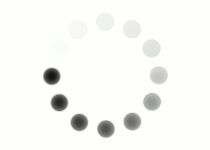Earlier in this course, you learned that the nuclear notation for an atom shows the chemical symbol for an element with its mass number as a left superscript and the atomic number as a left subscript. You also learned how to use the nuclear notation to determine the number of subatomic particles in an atom. For example:
How many protons, neutrons, and electrons are in this calcium (Ca) atom?

| Number of protons = 20 | The number of protons is the same as the atomic number. |
| Number of neutrons = 22 |
The number of neutrons is the difference between the mass number and the atomic number. 42 – 20 = 22 |
| Number of electrons = 20 | For a neutral atom, the number of electrons is the same as the number of protons. |
In this lesson, you have been learning about ions, which are atoms with a positive or negative charge. In the nuclear notation for an ion, the charge is written as a superscript on the right side of the chemical symbol. For example:
How many protons, neutrons, and electrons are in this calcium (Ca) ion?

| Number of protons = 20 | The number of protons is the same as the atomic number. |
| Number of neutrons = 22 |
The number of neutrons is the difference between the mass number and the atomic number. 42 – 20 = 22 |
| Number of electrons =18 |
The number of electrons is the difference between the number of protons and the charge. 20 – 2 = 18 |
Calculating the Number of Electrons in an Ion
To determine the number of electrons, subtract the charge from the atomic number (number of protons).
Number of protons − Charge = Number of electrons
Practice determining the number of protons, neutrons, and electrons in an ion by completing this activity. Answer the question on each tab, then check your answer.
The chemical symbol for aluminum is Al. Determine the number of protons, neutrons, and electrons as represented by the nuclear notation below.
\(_{13}^{26}\text{Al}^{3+}\)
Number of protons = 13
Number of neutrons = 13
Number of electrons = 10
If you need help arriving at this answer, click the Solution button.
| Protons | The number of protons is the same as the atomic number, which is written as a subscript to the left of the chemical symbol. |
| Neutrons |
The number of neutrons is the difference between the mass number and the atomic number. 26 – 13 = 13 |
| Electrons |
The number of electrons is the difference between the number of protons and the charge. 13 – 3 = 10 |
The chemical symbol for sulfur is S. Determine the number of protons, neutrons, and electrons as represented by the nuclear notation below.
\(_{16}^{33}\text{S}^{2-}\)
Number of protons = 16
Number of neutrons = 17
Number of electrons = 18
If you need help arriving at this answer, click the Solution button.
| Protons | The number of protons is the same as the atomic number, which is written as a subscript to the left of the chemical symbol. |
| Neutrons |
The number of neutrons is the difference between the mass number and the atomic number. 33 – 16 = 17 |
| Electrons |
The number of electrons is the difference between the number of protons and the charge. 16 – (-2) = 18 |
The chemical symbol for manganese is Mn. Determine the number of protons, neutrons, and electrons as represented by the nuclear notation below.
\(_{25}^{58}\text{Mn}^{7+} \)
Number of protons = 25
Number of neutrons = 33
Number of electrons = 18
If you need help arriving at this answer, click the Solution button.
| Protons | The number of protons is the same as the atomic number, which is written as a subscript to the left of the chemical symbol. |
| Neutrons |
The number of neutrons is the difference between the mass number and the atomic number. 58 – 25 = 33 |
| Electrons |
The number of electrons is the difference between the number of protons and the charge. 25 – 7 = 18 |

